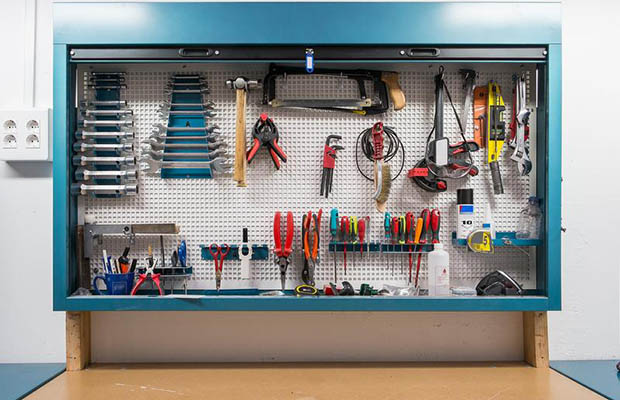

Small Companies Can Learn from Lean Management Systems
By Grainger Editorial Staff 11/14/17


When you're trying to get new management ideas, it's easy to get hung up on the specialized language that consultants often use. You might even feel like you need an MBA-to-English translator. But it's worth sticking with it, because new ideas can have a powerful effect on your business.
Take "lean management." Lean is nothing more than a set of principles designed to create the most value with the smallest amount of resources. Lean practices are important for all businesses, from the biggest to the smallest, but they are particularly critical at a midsize and smaller companies, where your resources are more limited.
And there are some great opportunities to implement lean practices at businesses like this. Their size means there are fewer people making decisions, so change can happen faster. Many small businesses also have some important basics already in place: a continuous improvement culture and dedicated planning time for managing short- and long-term goals each month.
But where large companies can hire consultants to help implement lean practices, smaller companies often go it alone. To do that successfully, the first step is to understand the basics of lean practices and learn about the help available from both government and vendors.
Know the Basics
Lean practices fit into five core steps:
1. Specify value: Determine what value means to your customer.
2. Identify value stream: Consider all the different steps and resources needed to complete the service from beginning to end.
3. Make the value flow: Identify wasteful activities or non-value-added activities to remove from the work stream.
4. Pull value: Let your customers help drive the value. That means you can make enough of what the customer needs, what they will order from you. The pull value can have a larger, positive impact instead of pushing product value.
5. Pursue perfection: Develop a baseline to measure success.
See It In Action
Of course, the best way to really learn about lean practices is to see them in action. Start with the US Department of Commerce’s National Institute of Standards and Technology's Manufacturing Extension Partnership (MEP). The public-private partnership can help small companies find new technology, conduct market research and improve product design, sales and marketing and overall operations management. MEP conducts small business innovation projects too, which can be a boon for harnessing the latest ideas.
There are more than 900 case studies on MEP's website, and many are about small companies that implemented lean practices. For Queen Been Creations, an Oregon-based maker of wallets, bags and textiles, the journey began at a workshop sponsored by a local MEP affiliate, the Oregon Manufacturing Extension Partnership. Then, Queen Bee implemented a so-called 5S organization system, visual inventory management and lean accounting principles. The company also learned how to better schedule its workforce to meet spikes in seasonal demand. These lean practices helped it to better manage its case flow and shorten production lead times.
Or take a look at MEP's work with Selux, a maker of high-end custom light fixtures in upstate New York. Through an MEP workshop on performance benchmarking, Selux identified a consultant who helped it implement a workplace reorganization that reduced its assembly cycle time by 80%. The lean practices implemented at Wisconsin-based W.S. Darley reduced work-in-progress inventory by $2 million while raising its percentage of on-time delivers to 98% from 51%. Overall, MEP estimates that sales increased by $767 million at companies that it has aided and that there has been $1.4 billion in retained sales, with 22,739 jobs either retained or created.
The 5S approach to lean emphasizes eliminating unnecessary material in your workplace and replenishing other materials as close to when they will be used as possible. Many small businesses can implement those changes by talking to their vendors and taking advantage of technology to manage inventory and re-order stock in a timely fashion. If your company uses a material requirements planning (MRP) or enterprise resource planning (ERP) system, see how vendor technology can be integrated with those systems. A small business can use Grainger.com to develop personal lists to replenish items, and Grainger integrates with MRP or ERP systems to decrease incorrect ordering or mistakes. Visit Grainger Consulting Services for more details.
Implementing lean strategies does take time, but the payoff is great. Plan for change and make it happen.
![]()
The information contained in this article is intended for general information purposes only and is based on information available as of the initial date of publication. No representation is made that the information or references are complete or remain current. This article is not a substitute for review of current applicable government regulations, industry standards, or other standards specific to your business and/or activities and should not be construed as legal advice or opinion. Readers with specific questions should refer to the applicable standards or consult with an attorney.






